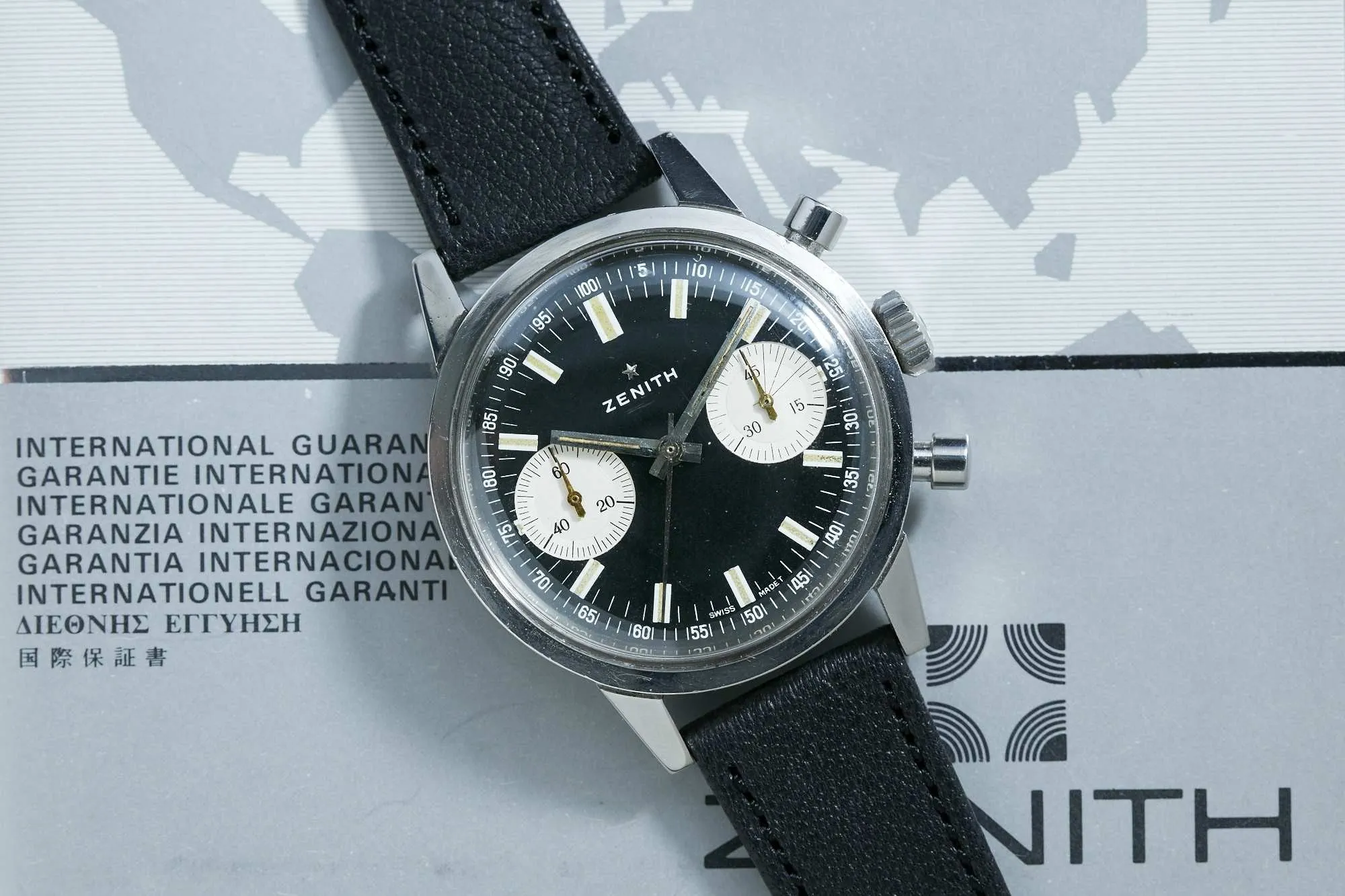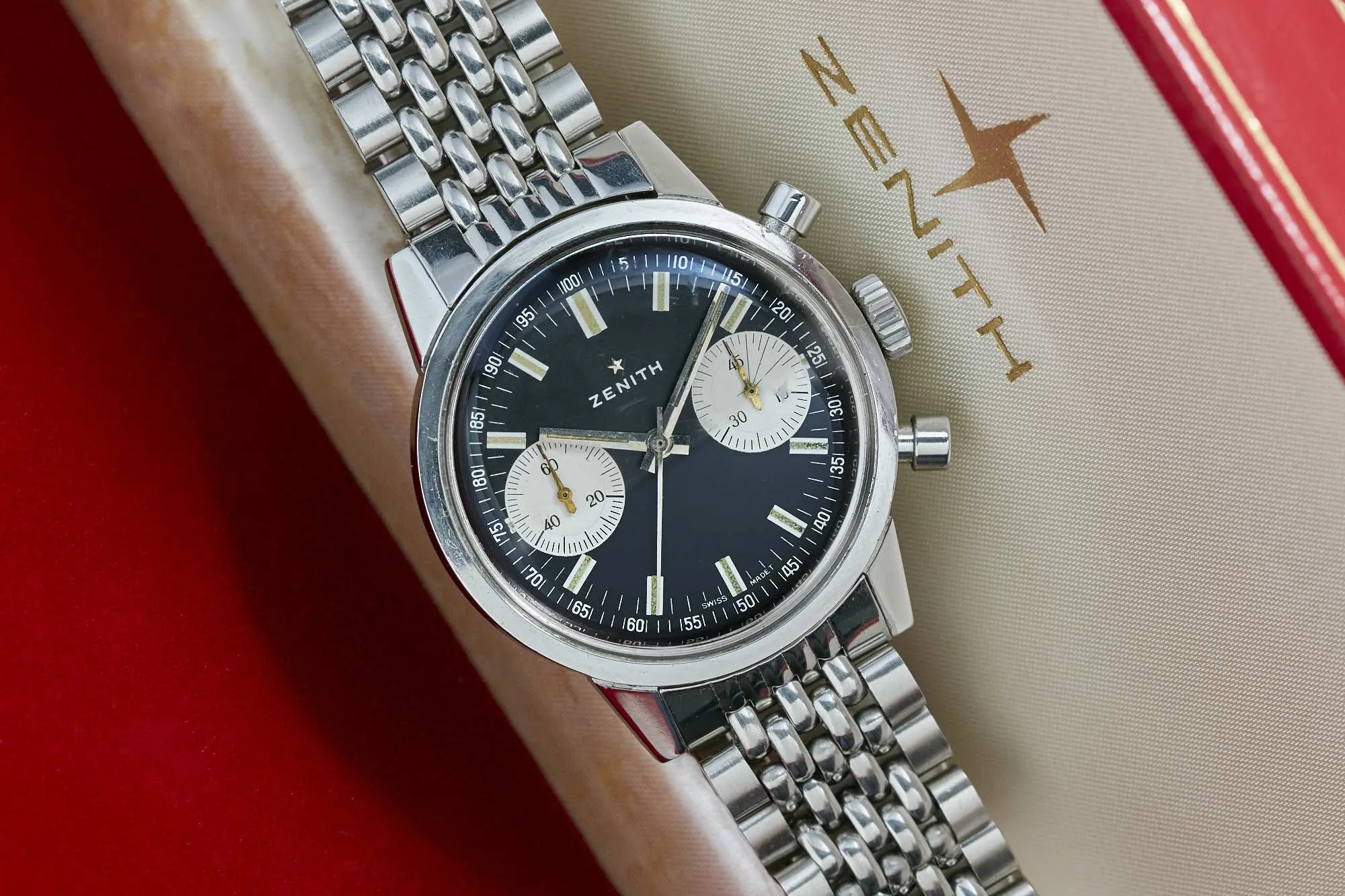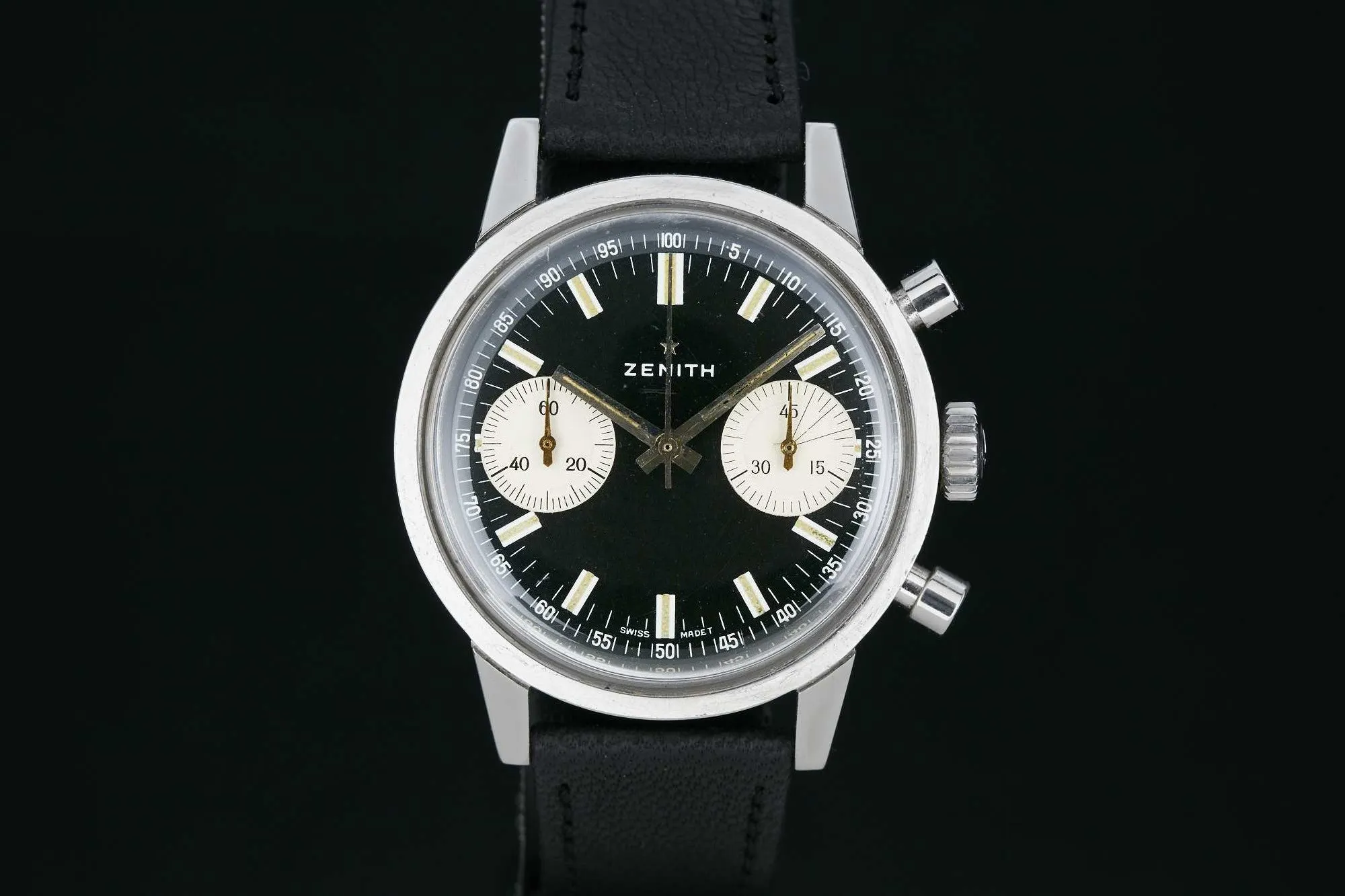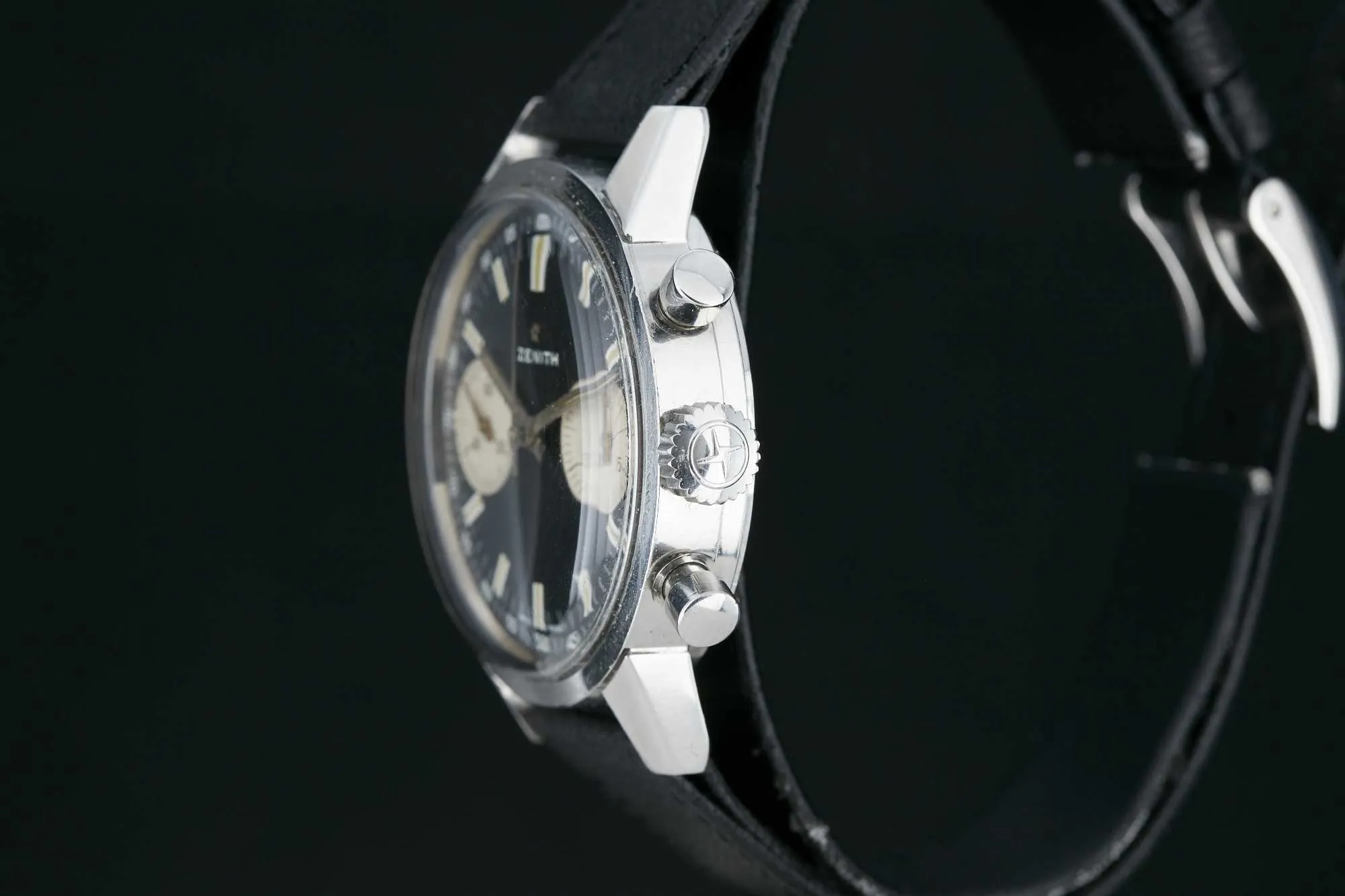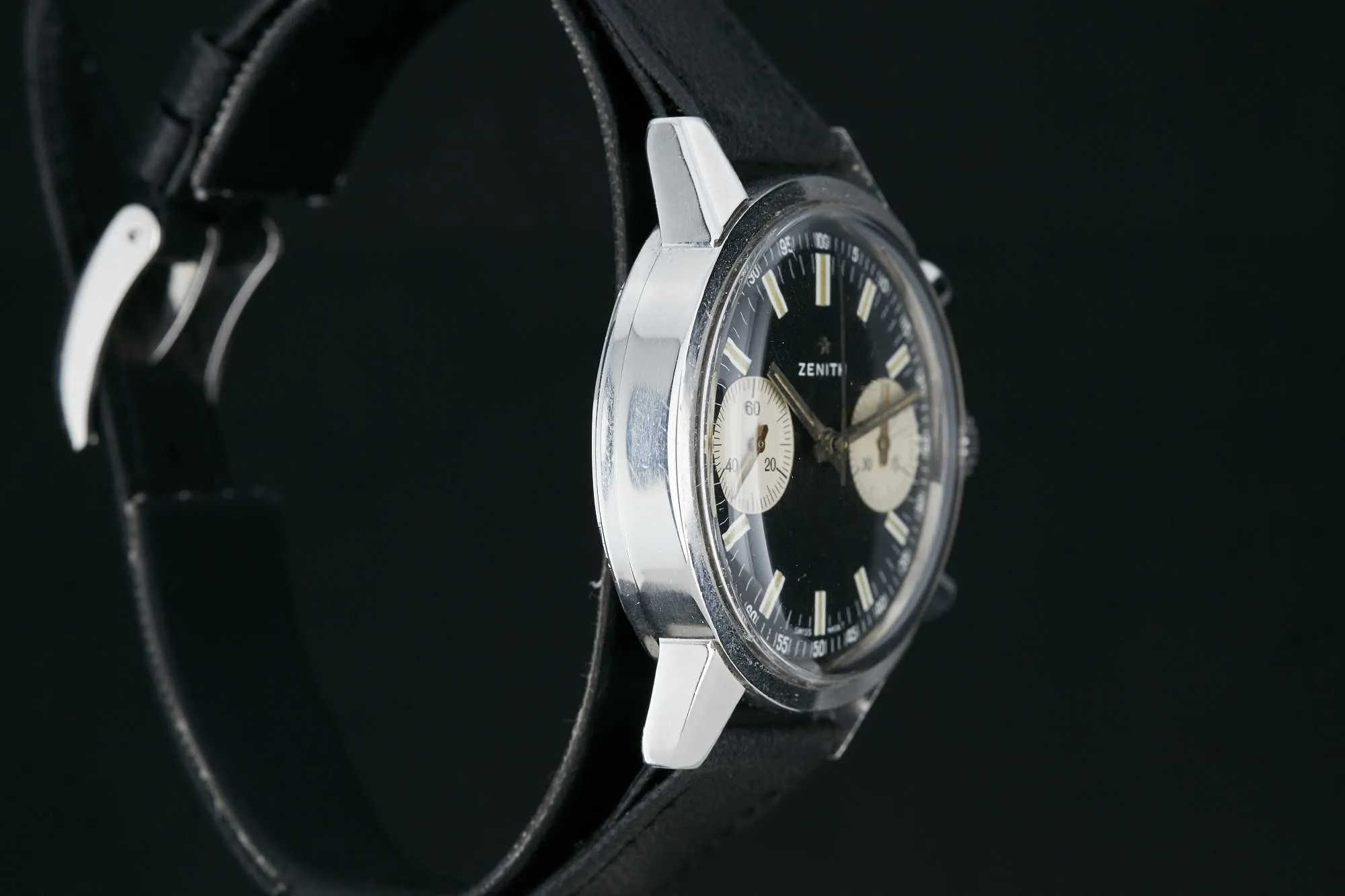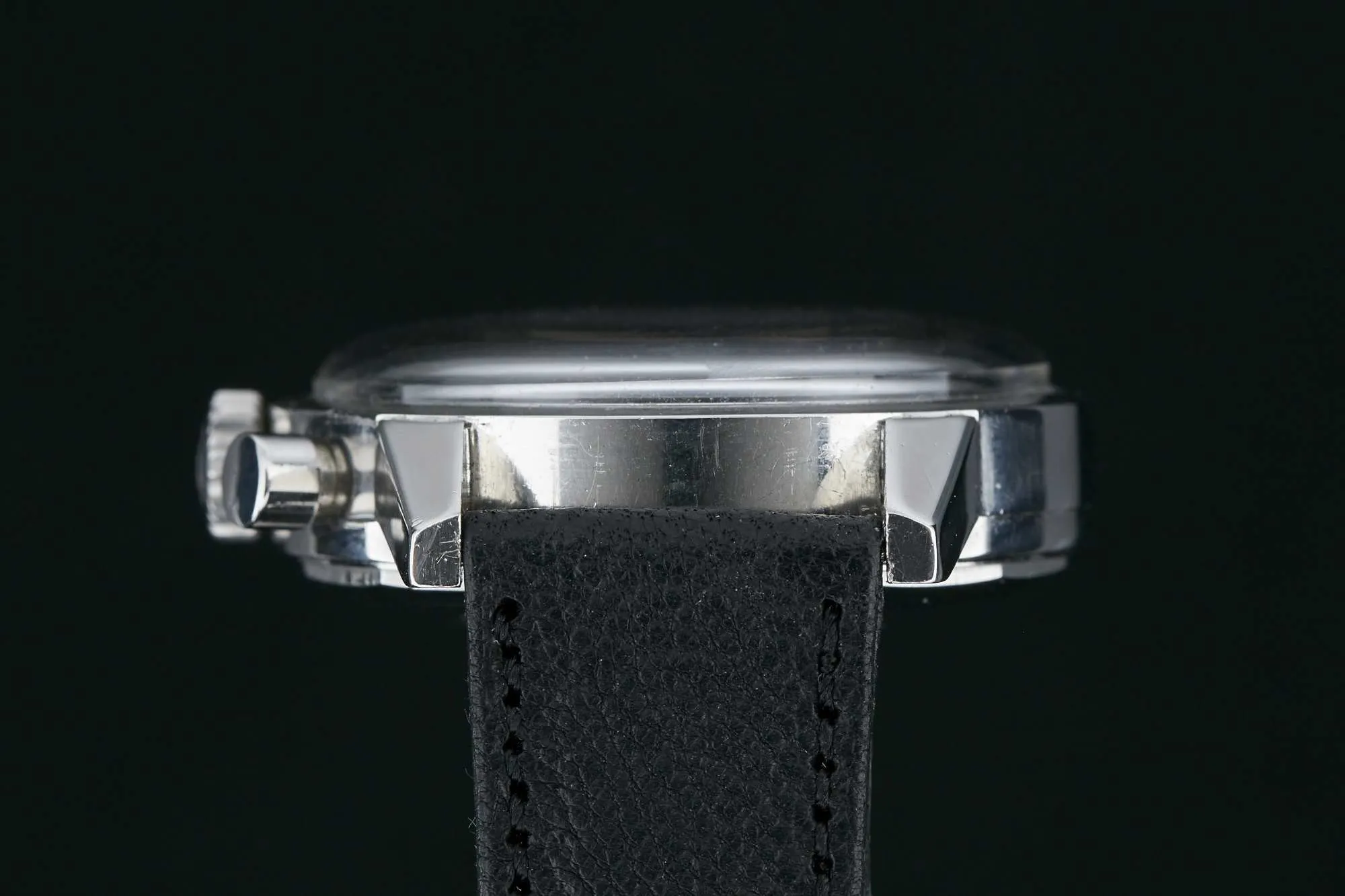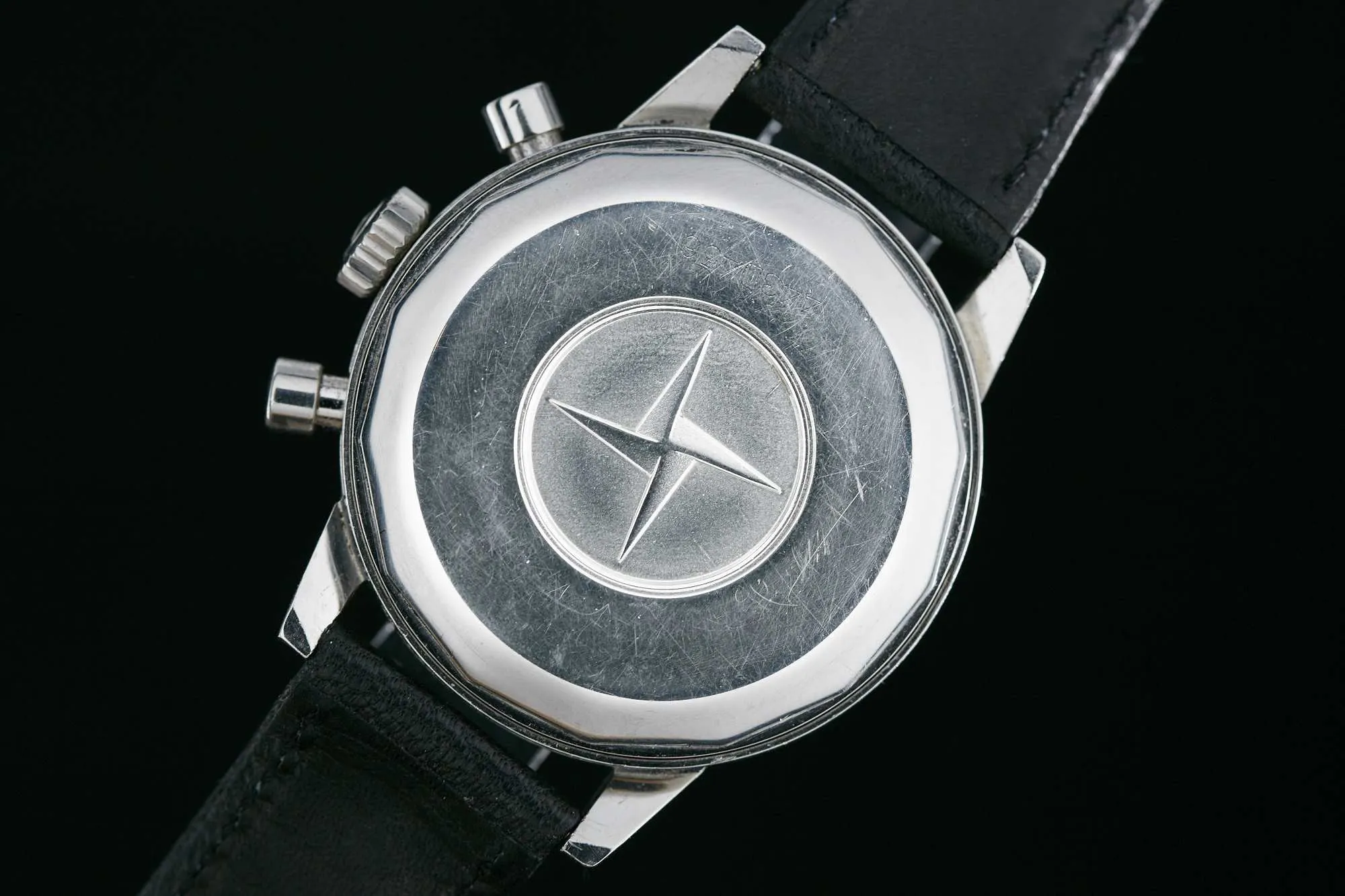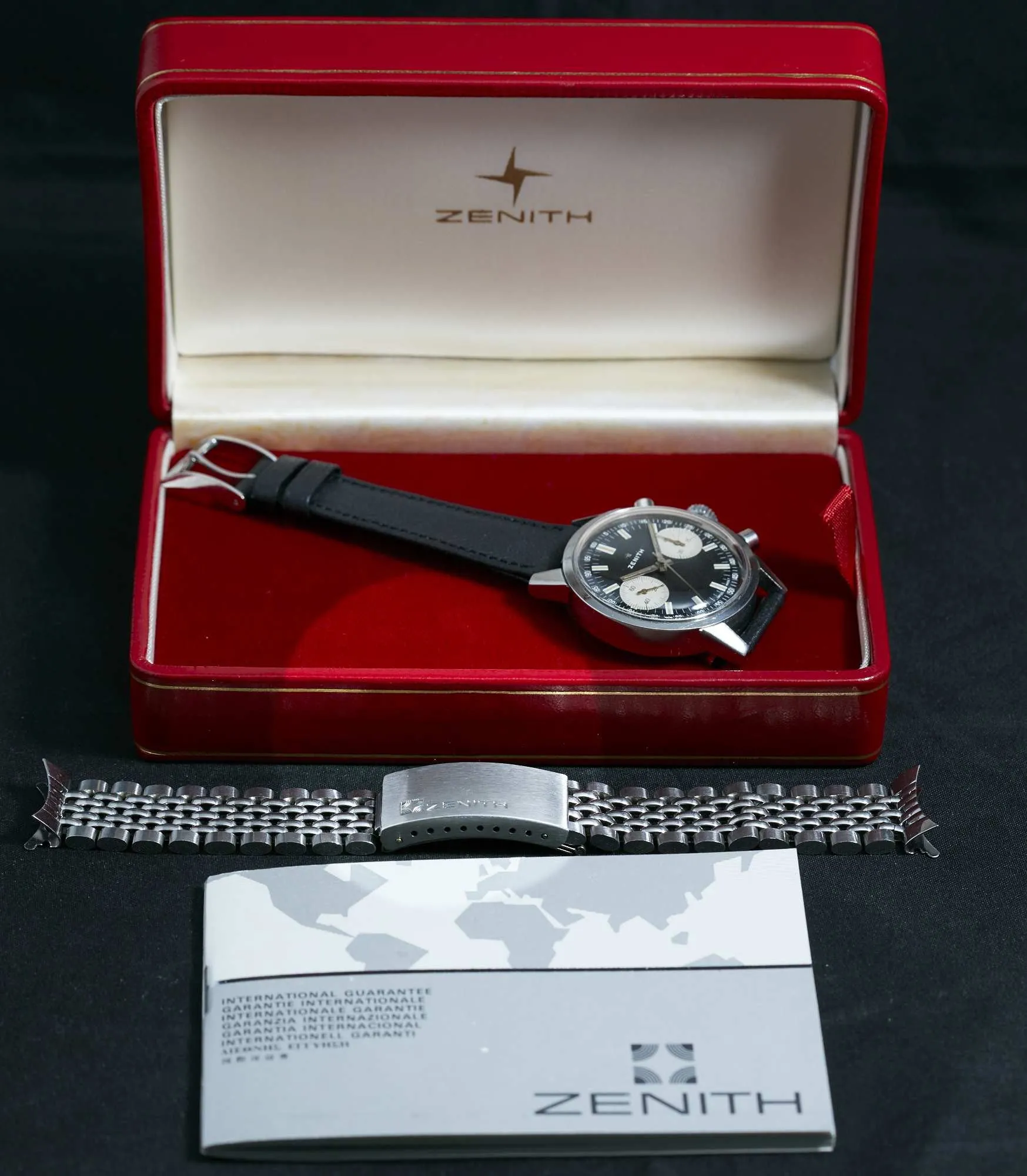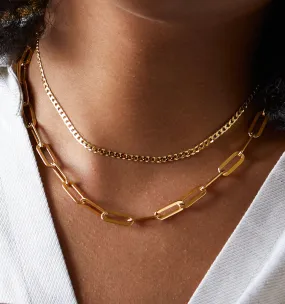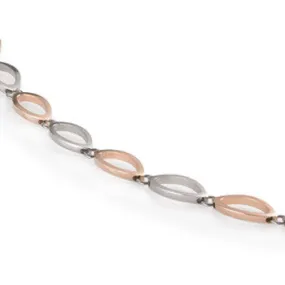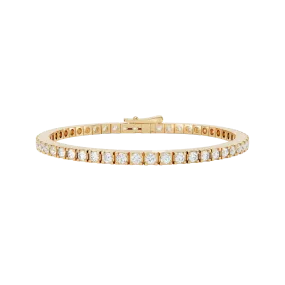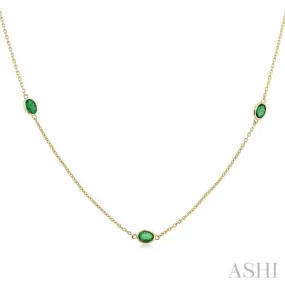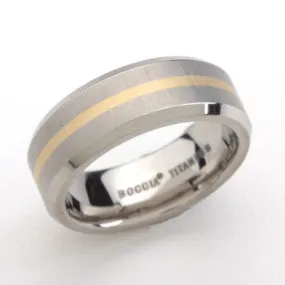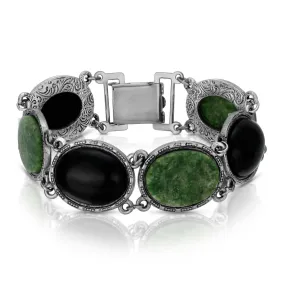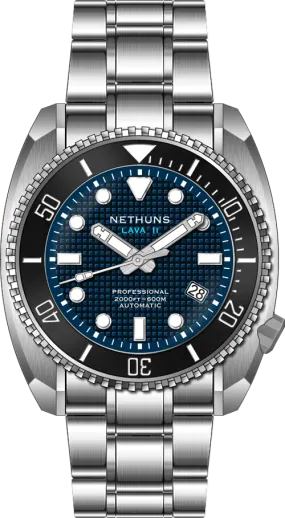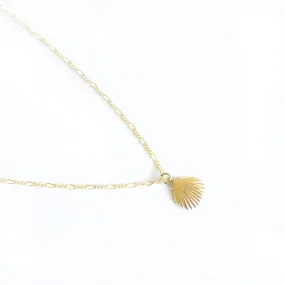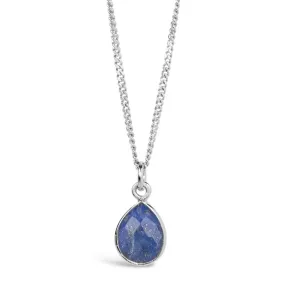Georges Favre-Jacot began producing pocket watches in Le Locle at the age of twenty-two. By the turn of the 20th century, Favre-Jacot would be producing marine chronometers and chronometer-grade movements, and a chronometer movement of his would win at a competition in Neuchâtel in 1903. Under the brand name Zenith, formally established in 1911, Favre-Jacot expanded his production to include wristwatches.
Zenith's chronographs, in particular, gained a reputation for excellence. At first Zenith used Excelsior Park and Valjoux movements, sharing them with and (which Zenith would acquire in 1969). By the 1960s Zenith acquired èbauche manufacturer Martel and began using their movements exclusively.
Perhaps the most notable of these Martel-designed chronograph movements was the Caliber 146. First produced in 1969, the Caliber 146 came in two iterations, one--the Caliber 146HP--with a three-register dial layout that Universal Genève used in the 1950s. The other, which can be found in this watch, the Reference A278, was the two-register Caliber 146DP.
1969 was a banner year for horology, because it was the year that the first automatic chronograph movement was produced. Dubbed "Project 99," this was a race between a team consisting of , Buren, Dubois-Depraz, ; Seiko; and Zenith. Zenith used the Caliber 146 as a basis for the caliber which Zenith would dub --or "the first."
Zenith ceased using manually-wound movements in their chronographs after the introduction of the movement. Due to this fact, Zenith chronographs with manually-wound movements are relatively rare. The Reference A27 series came in several iterations, including one with a white dial (Reference A273) and a silver dial (Reference A279). Of these, the black-dialed Reference A278 is perhaps the most uncommonly-seen. Combining an attractive and desirable colorway--a "reverse panda," with white indices on a black dial--with a sturdy movement, the Reference A278 is desirable and sure to please.

 Cart(
Cart(